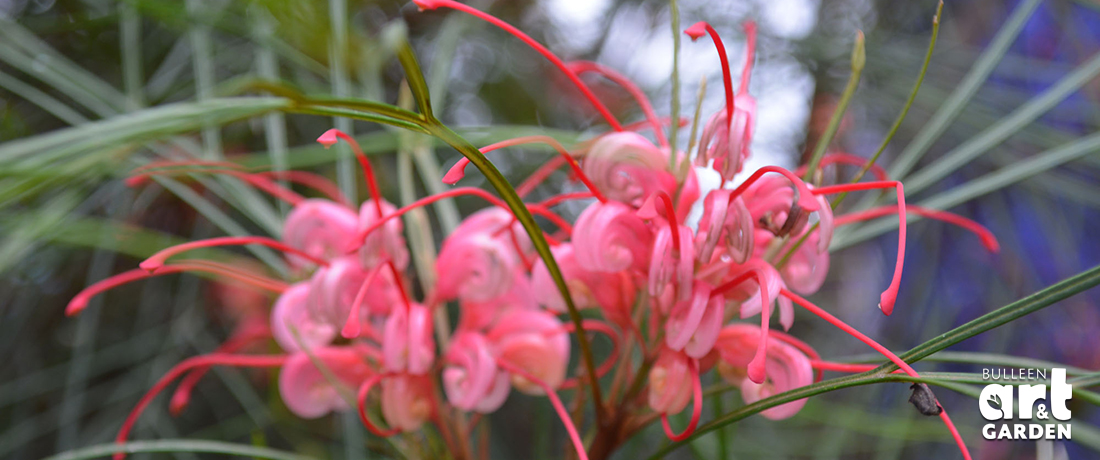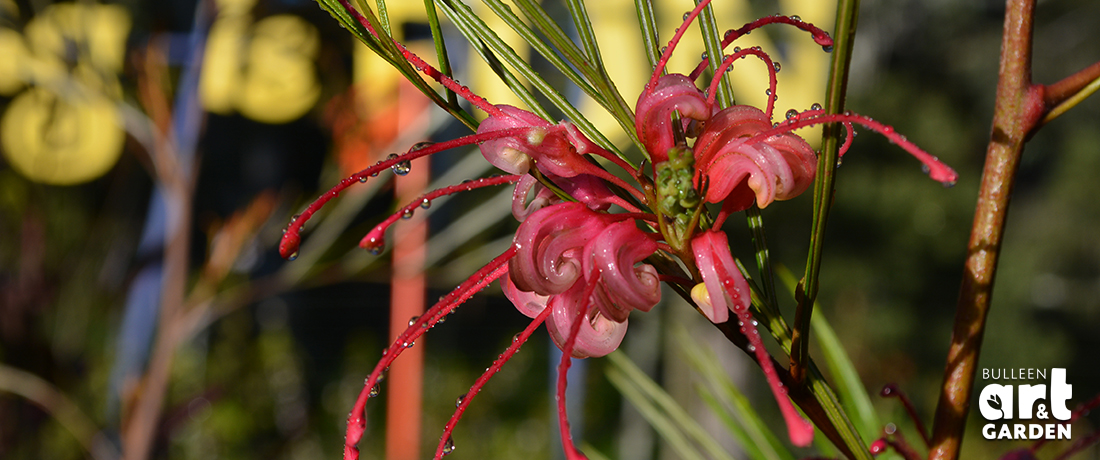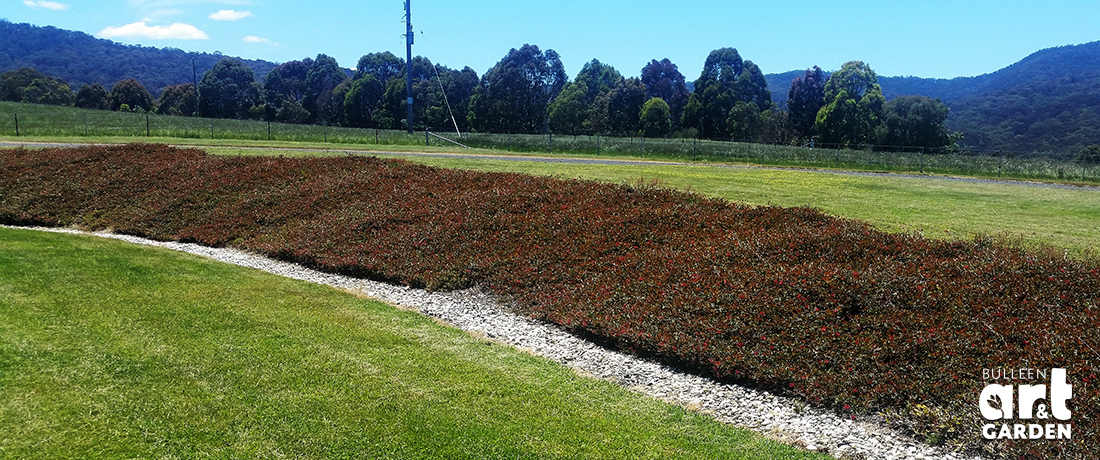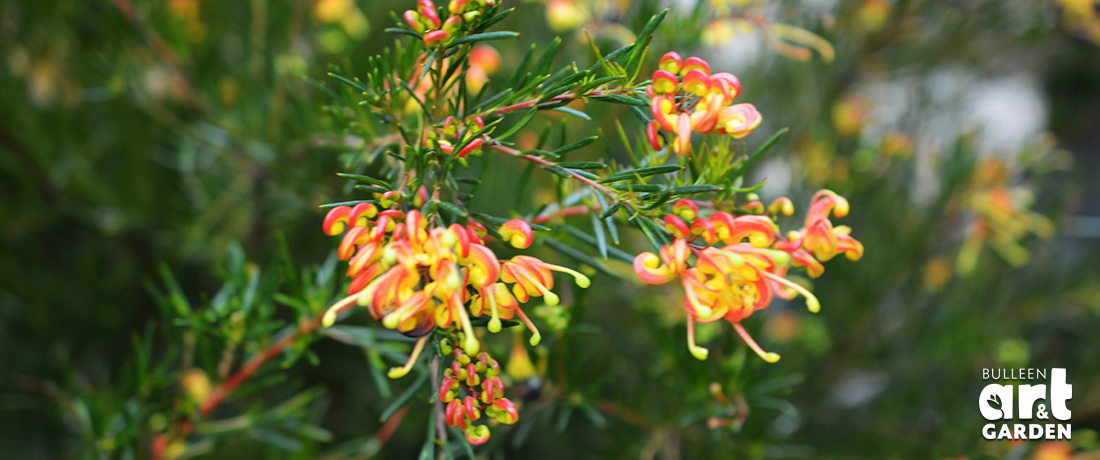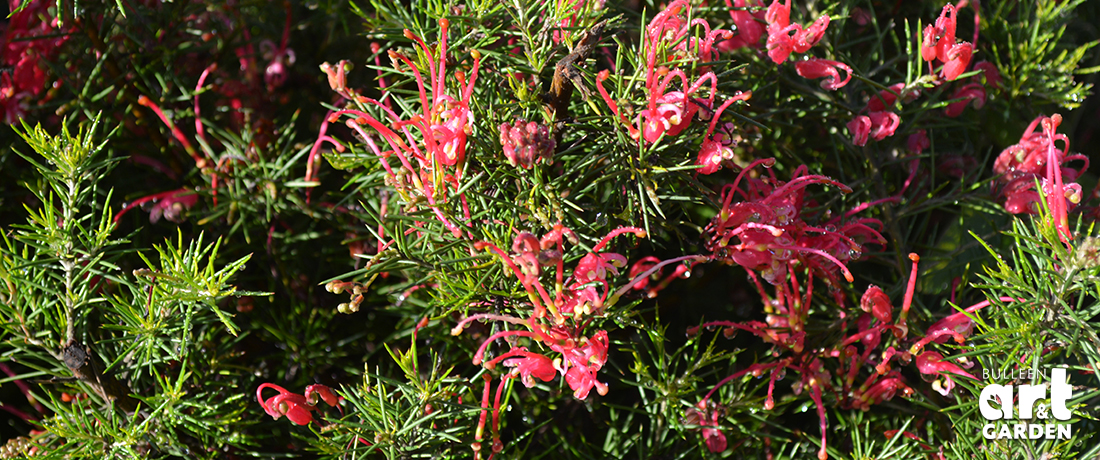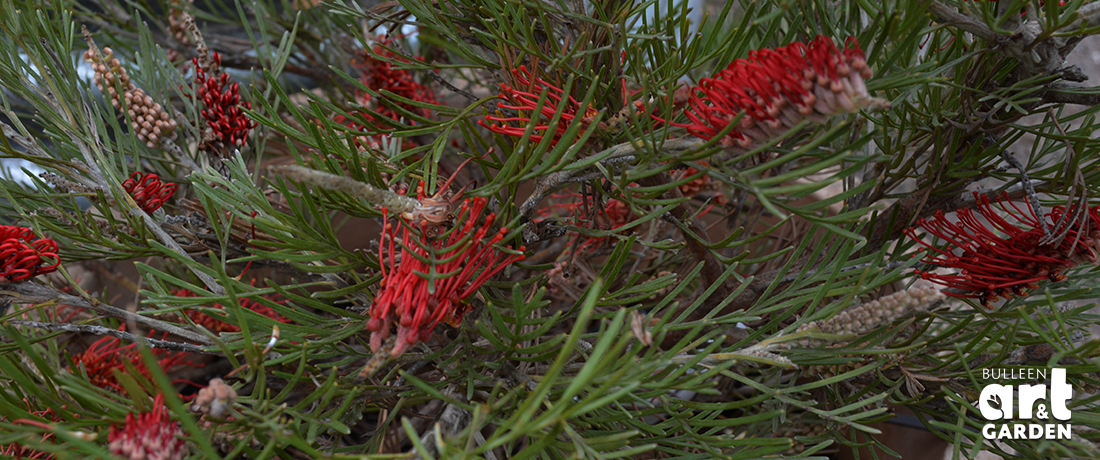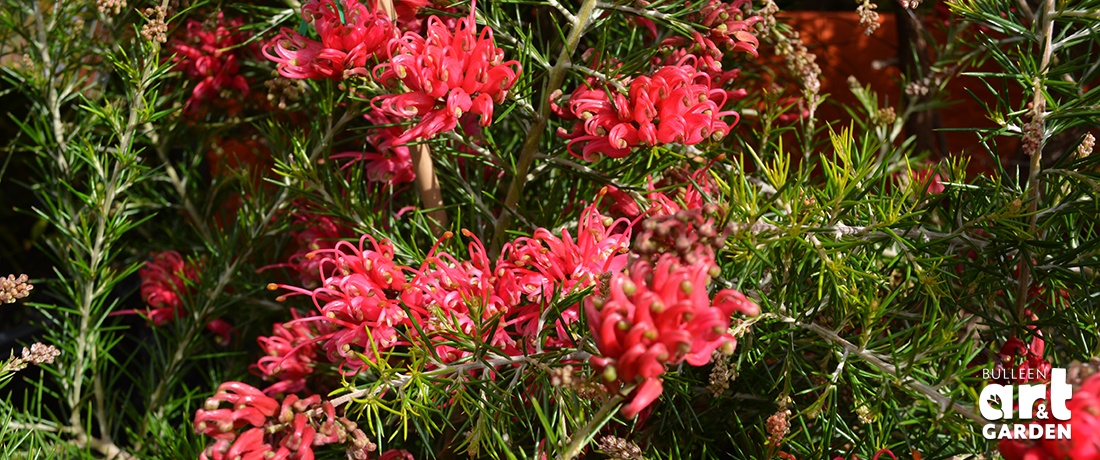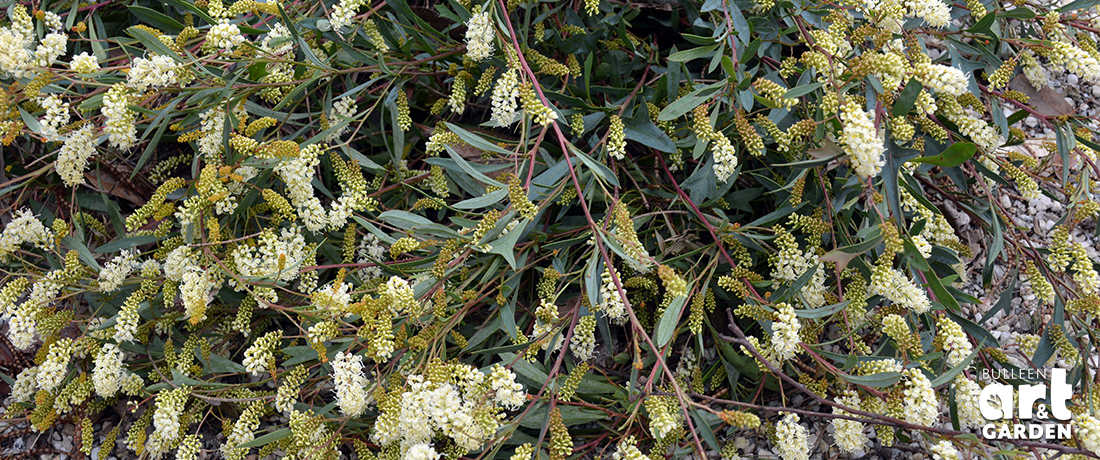 Important note about plant availability. Important note about plant availability.There are hundreds of factsheets on our website provided for your information. Not all plants will be available at all times throughout the year. To confirm availability please call (03) 8850 3030 and ask for the nursery. |
Grevilleas are ever flowering, ever popular and there is an ever-increasing number of new cultivars released each season. This genus ranges from groundcovers to trees and can have some widely different requirements and tolerances, so check the individual labels. But for an overview of how to have success with Grevilleas read on.
Watering
Water in well when planting, using a weak seaweed solution is beneficial. Do follow up watering (not if raining) for the next 6 weeks to allow for ideal growing conditions. You want the plant to get established and for the roots to grow well. Hot dry windy conditions may require extra watering. Once well established, Grevilleas can survive extended dry periods, but all grow and flower better with the occasional good soak.
Light and Location
Usually prefers full sun, but can take some shade. A minimum of 6 hours full sun is preferable. Pick your site well. An established grevillea will not move well – not at all. Protect from strong winds.
Temperature
A few are frost tolerant – many are not – be sure to check the label.
Fertilising
Use a native fertiliser. Many are sensitive to phosphorus, it is safer to assume they all are. Feed in early spring and again in late summer.
Maintenance
• Many grevilleas seem to flower all year, which makes the conventional nursery axiom of ‘prune after flowering’ a bit problematic. However they generally have a major flush of flowering and it is after this flush that cutting back by up to one third will help promote bushy growth. If you still can’t work out when to prune – opt for pruning in October and follow up with tip prunig after flowering. When pruning, be aware that sometimes the leaves can prick and cause a mild skin irritation.
• Mulching is very beneficial for grevilleas. They like the moisture retaining qualities and the additional organic material supplied to the soil as it breaks down. Keep away from the stem of the plant to avoid any chance of collar rot.
Pests and Diseases
• Can suffer root rot in heavy clay soils. Ideally plant on a slope so drainage is OK or use raised beds. If your grevillea suddenly looks sick, rapidly loses leaves and dies – it is probably root rot, and there is no coming back from it.
• Some are prone to a dark mould that seems to stain the stems (eg Grevillea Moonlight), spraying with a copper based fungicide can help with this.
• Grevilleas attract a lot of birds. Some sip the nectar and others feast on the nectar feeding insects, and at the same time clean up other damaging insects.
 Important note about plant availability. Important note about plant availability.There are hundreds of factsheets on our website provided for your information. Not all plants will be available at all times throughout the year. To confirm availability please call (03) 8850 3030 and ask for the nursery. |
A few popular varieties:
Grevillea ‘Bon Accord’ (Grevillea johnsonii x wilsonii) – Beautiful waxy pink/red flowers held prominently at the end of the branches on a 2-4m x 2-4m shrub / small tree. Finely divided long narrow foliage. This shrub as an unusual intricate delicacy about it. Bon Accord flowers all year, but particularly from spring to summer. Once well established, Bon Accord can survive extended dry periods, but will grow and flower better with the occasional good soak.
Grevillea ‘Coconut Ice’ – Red / pink / cream flower held prominently at the end of the branches on a 2m x 2m shrub. Attractive divided green ferny type leaves and flowers that appear all year round have made this a very popular cultivar since 1990.
Grevillea ‘Elegance’ – (Grevillea longistyla x johnsonii) Beautiful waxy pink/red flowers with orange hints held prominently at the end of the branches on a 4m x4m shrub/small tree. Finely divided long narrow foliage. This shrub as an unusual delicacy about it. Flowers all year.
Grevillea ‘Gaudi Chaudi’ – A prostrate, spreading grevillea native to south-eastern Australia. It features lovely maroon-red toothbrush flowers from spring to winter. They are a fantastic addition to a habitat garden, birds love the flowers! The foliage is tough and leathery, but quite beautiful. New foliage is reddish, turning mid to dark green as it matures.
Grevillea ‘Loopy Lou’ – Lovely fat yellow, red and pink flowers in them are held prominently at the end of the branches on a compact 0.5m shrub (can grow taller in warmer climates). Attractive divided ferny type leaves (prickly) and flowers that appear all year round have made this a very popular cultivar.
Grevillea ‘Molonglo’ – Grevillea juniperina ‘Molonglo’ A low spreading groundcover style grevillea with a profusion of yellow to apricot flowers, mostly in winter and spring. These produce copious quantities of nectar and are wonderful wildlife attracters. A particularly tough and hardy grevillea, good for difficult locations. Can reach 1m in height, but generally lower, and 3m in width.
Grevillea ‘Moonlight’ – Pale creamy white large flowers group together at the end of the branches making a very showy grevillea. Flowers all year round. Has the deeply divided fern type leaves of Grevillea banksia, which is thought to be a parent. May grow up to 5m in warmer areas, more like 3m in the cooler areas of Victoria. Makes a good hedge or screen, also spectacular enough to be a feature plant. A very popular Grevillea.
Grevillea ‘Mount Tamboritha’ (Grevillea lanigera ‘Mount Tamboritha’) – One of the most popular prostrate Grevilleas around. Low growing and spreading with lovely pale pink spider flowers. Copes with frost and drought.
Grevillea ‘Ned Kelly’ – (syn. Grevillea ‘Mason’s Hybrid’) Lovely fat orange with red splashes flowers are held prominently at the end of the branches on a broad 2m-3m tall shrub. Attractive divided ferny type leaves (prickly) and flowers that appear all year round have made this a very popular cultivar since 1970s.
Grevillea ‘Peaches and Cream’ – Bicoloured peach and soft yellow flowers held prominently at the end of the branches on a broad 1.2m high shrub. Attractive divided green ferny type leaves. Flowers heavily in early spring to summer, but also flowers sporadically all year round. Outstanding.
Grevillea ‘Red Hooks’ (Grevillea hookeriana ‘Red Hooks’) – Bright vibrant red toothbrush style flowers in maximum display over winter and spring, but appearing sporadically over all the year. Strong horizontal growth and mid green deeply dissected leaves. At 3m x 4-5m wide it makes a great hedge or screen.
Grevillea ‘Robyn Gordon’ – Lovely fat red flowers are held prominently at the end of the branches on a nice compact 1.5m+ shrub. Attractive divided ferny type leaves and flowers that appear all year round have made this a very popular cultivar which has remained a justifiable favourite since its release in 1973. Well suited to Melbourne and Victoria (despite being bred in Queensland).
Grevillea rosemarinafolia (Rosemary Grevillea) – Clear rose red spidery flowers borne along the branches from late winter all the way through to summer, with occasional bursts of flowers at other times. The dark green rosemary like leaves are spiny and provide good habitat for small animals, birds and insects. Approx 2m tall and wide. Numerous cultivars of this species have been bred, often dwarfed, give a wide variety of smaller sizes and foliage colours.
Grevillea ‘Scarlet Sprite’ – (Grevillea rosmarinafolia ‘Scarlet Sprite’) Clear rose red spidery flowers borne along the branches from late winter all the way through to summer, with occasional bursts of flowers at other times. The dark green rosemary like leaves are spiny and provide good habitat for small animals, birds and insects. A dwarf form, only growing to under 1m.
Grevillea ‘Superb’ – Lovely fat apricot flowers which have splashes of red, yellow and orange in them are held prominently at the end of the branches on a broad 1.5m tall shrub. Attractive divided ferny type leaves (prickly) and flowers that appear all year round have made this a very popular cultivar since 1990.

